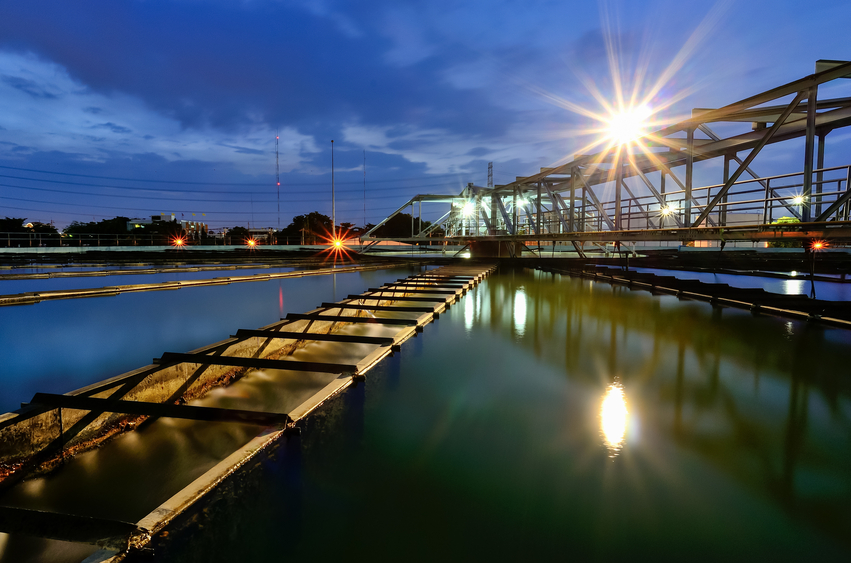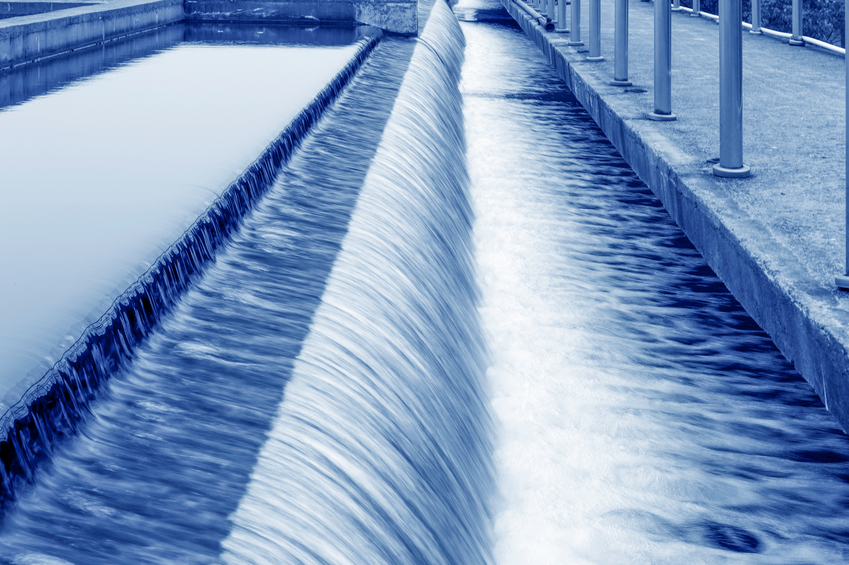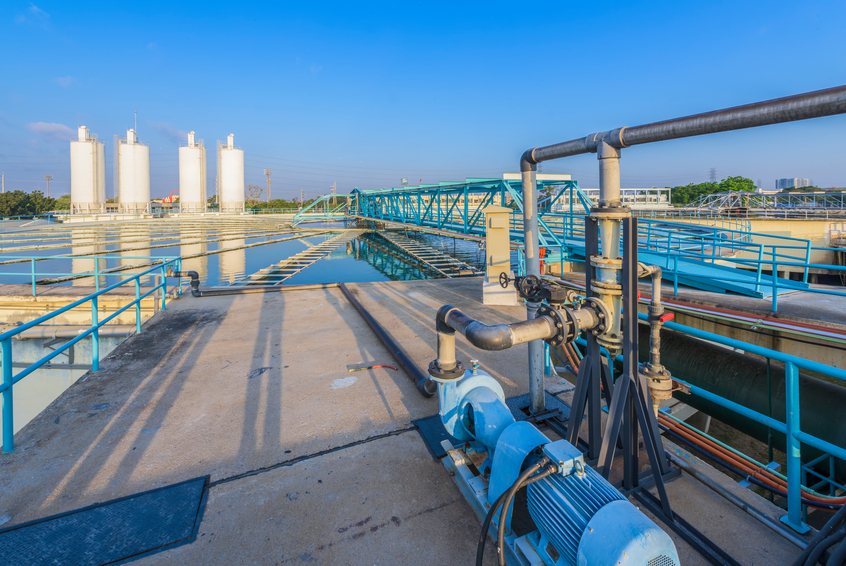Alberta Chemical 30 PDH Discount Package
Biological Wastewater Treatment II - MBBR Processes (C04-045)
Cooling Water Problems and Solutions (M05-009)
Fundamentals of Chemistry (H05-001)
Management of Onsite and Clustered Wastewater Treatment Systems (C07-013)
Reactor Water Chemistry (H03-001)
UV Disinfection Systems for Drinking Water - Overview (C04-006)

This online engineering course provides an overview of biological wastewater treatment, a general description of the activated sludge process, information about several variations of the activated sludge process, discussion of design calculations for an activated sludge aeration tank, and discussion of activated sludge operational calculations. Example calculations and examples using the course spreadsheet for making the calculations are also included.
This course is Part I of a three-part series. The other two courses in this Biological Wastewater Treatment series are about Moving Bed Biofilm Reactor (MBBR) processes and Membrane Biofilm Reactor (MBR) processes.
The activated sludge process is very widely used for biological wastewater treatment. In a sewage (or industrial wastewater) treatment plant, the activated sludge process is a biological process that can be used for one or several of the following purposes: oxidizing carbonaceous biological matter, oxidizing nitrogenous matter (mainly ammonium and nitrogen in biological matter), and removing nutrients (nitrogen and phosphorus).
This 2 PDH online course is intended primarily for civil engineers, environmental engineers, and chemical engineers. After completing this course you will be familiar with the common variations of the activated sludge process used for biological wastewater treatment and be able to make typical aeration tank design and operational calculations.
This P.Eng. continuing education course is intended to provide you with the following specific knowledge and skills:
- Knowing the equation for biological oxidation and how it fits into the organic carbon cycle
- Knowing the equation for photosynthesis and how it fits into the organic carbon cycle
- Learning about the major components of an activated sludge wastewater treatment system
- Understanding the differences between an extended aeration and conventional activated sludge system
- Understanding the differences between a contact stabilization and conventional activated sludge system
- Calculating the required aeration tank volume (in U.S. units) for a specified volumetric loading, hydraulic residence time, or aeration tank F:M ratio, if given suitable aeration tank influent and aeration tank parameter information.
- Calculating the required aeration tank volume (in S.I. units) for a specified volumetric loading, hydraulic residence time, or aeration tank F:M ratio, if given suitable aeration tank influent and aeration tank parameter information.
Aeration Tank Blower Calcns Package_US units (346 KB)
Upon successful completion of the quiz, print your Certificate of Completion instantly. (Note: if you are paying by check or money order, you will be able to print it after we receive your payment.) For your convenience, we will also email it to you. Please note that you can log in to your account at any time to access and print your Certificate of Completion.

This online engineering PDH course provides a discussion and detailed examples of process design calculations for a single stage BOD removal MBBR (moving bed biofilm reactor) system, a two-stage BOD removal MBBR system, a single stage tertiary nitrification MBBR system, a two-stage BOD removal/Nitrification MBBR system a post-anoxic denitrification MBBR system and a pre-anoxic denitrification MBBR system.
This course is Part II of a three-part series. The other two courses in this Biological Wastewater Treatment series are about activated sludge processes (Part I) and Membrane Biofilm Reactor (MBR) processes (Part III).
The MBBR process is an attached growth process that uses plastic carriers to provide a surface on which biofilm grows. The MBBR process doesn’t require sludge recycle, because the biomass remains in the system attached to the plastic carriers. The required reactor size for an MBBR process is typically significantly smaller than that for an activated sludge process treating the same wastewater flow, or for other common attached growth processes like the RBC or trickling filter. It can be used for BOD removal, biological nitrification, biological denitrification, and biological phosphorus removal.
This 4 PDH online course is intended primarily for civil engineers, environmental engineers, and chemical engineers. After completing this course you will be familiar with the general components and configuration of an MBBR wastewater treatment process and be able to make typical process design calculations for an MBBR process.
This P.Eng. continuing education course is intended to provide you with the following specific knowledge and skills:
- Understanding the differences between attached growth and suspended growth biological wastewater treatment processes
- Familiarizing with the components of and the general configuration of an MBBR wastewater treatment process
- Calculating the loading rate of a wastewater constituent to an MBBR process (in lb/day and g/day) for a specified wastewater flow rate and constituent concentration
- Calculating the required carrier surface area for an MBBR wastewater treatment process for a specified SALR and loading rate.
- Calculating the required MBBR tank volume for specified carrier surface area, carrier specific surface area and carrier fill %
- Calculating the liquid volume in an MBBR tank for known tank volume, carrier volume and carrier % void space
- Calculating the BOD, NH3-N, or NO3-N removal rate for known values of the surface area removal rate (SARR) and design carrier surface area
- Calculating an estimated effluent BOD, NH3-N or NO3-N concentration based on known values of the appropriate loading rate, estimated removal rate, and design wastewater flow rate
- Learning how to make process design calculations for a post-Anoxic denitrification MBBR process, including required tank sizes, estimated effluent concentrations, alkalinity requirement and carbon source requirement
- Learning how to make process design calculations for a pre-Anoxic denitrification MBBR process, including required tank sizes, estimated effluent concentrations, alkalinity requirements
MBBR BOD Removal Nitrification_US units (395 KB)
Upon successful completion of the quiz, print your Certificate of Completion instantly. (Note: if you are paying by check or money order, you will be able to print it after we receive your payment.) For your convenience, we will also email it to you. Please note that you can log in to your account at any time to access and print your Certificate of Completion.

This online engineering PDH course presents an overview of common chemical treatment program that may be required to maintain cooling water systems in good operating condition. Reasons and means are discussed for controlling scale, deposition, corrosion, and biological fouling. The discussion also covers the information on chemicals used for control, and methods available to permit operation within the limits.
The three primary reasons that the cooling water treatment may be required are to control corrosion, scale formation, and the growth of biological agents. Any of these problems - or more usually a combination of them - can cause a loss of efficiency, shorten equipment life and push up operating costs. Imagine the large amounts of dollars lost when insufficient cooling suddenly curtails operations of process equipment.
This 5 PDH online course is applicable to all engineers and designers involved in power plants, oil and gas, chemical and petrochemical process facilities, refineries, industrial plants and HVAC systems in commercial buildings.
This P.Eng. continuing education course is intended to provide you with the following specific knowledge and skills:
- Understand the critical parameters such as conductivity, TDS, pH, alkalinity and saturation index applicable to cooling water treatment
- Understand the factors responsible for scale and corrosion
- Understand the types of scale and methods to minimize its formation
- Understand relationship between the cycles of concentration and blowdown
- Understand the physical methods of treating water such as softener, dealkalizer, ion-exchanger, filtration, and electronic de-scaling equipments
- Understand the corrosion types and the control techniques to mitigate corrosion
- Learn four types of corrosion inhibitors including, anodic, cathodic, mixed and adsorption types
- Understand the principles of cathodic protection
- Learn the possible types of biological fouling and the treatment methods including oxidizing and non-oxidizing biocides
- Understand the chemical feed equipment for closed and open cooling water systems
- Learn the five application methods for dosing chemicals including their benefits and limitations
- Learn the control sensors and monitoring devices used in cooling water treatment
In this professional engineering CEU course, you need to review the document titled "Cooling Water Problems and Solutions".
Upon successful completion of the quiz, print your Certificate of Completion instantly. (Note: if you are paying by check or money order, you will be able to print it after we receive your payment.) For your convenience, we will also email it to you. Please note that you can log in to your account at any time to access and print your Certificate of Completion.

This online engineering PDH course addresses the basics of chemistry. It introduces concepts on the atomic structure of matter. It also discusses the periodic table and the significance of the information in a periodic table. Furthermore, it explains chemical bonding, the laws of chemistry, and chemical equations.
This 5 PDH online course is applicable to chemical and environmental engineers, design and construction personnel, technical staff and facility operators who are interested in gaining a better understanding of the basics of chemistry.
This P.Eng. continuing education course is intended to provide you with the following specific knowledge and skills:
- Characteristics of atoms
- The periodic table
- Chemical bonding
- Chemical equations
- Acids, bases, salts and pH
In this professional engineering CEU course, you need to review Module 1, "Fundamentals of Chemistry" of the Department of Energy Publication DOE-HDBK-1015/1-93, "Chemistry".
Upon successful completion of the quiz, print your Certificate of Completion instantly. (Note: if you are paying by check or money order, you will be able to print it after we receive your payment.) For your convenience, we will also email it to you. Please note that you can log in to your account at any time to access and print your Certificate of Completion.

This online engineering PDH course provides an overview of key considerations for developing or enhancing management programs for decentralized wastewater treatment systems.
One in every four households in the United States relies on an individual onsite or small cluster system to treat wastewater. In far too many cases, these systems are installed and largely forgotten – until problems arise. On the other hand, EPA concluded in its 1997 Report to Congress that “adequately managed decentralized wastewater systems are a cost-effective and long-term option for meeting public health and water quality goals, particularly in less densely populated areas.”
The key to achieving effective performance of decentralized sewage treatment systems from the simplest “box and rocks” septic tank and drainfield system to the most complex treatment and dispersal units; is an effective management strategy. This strategy must consider several critical elements such as planning, site conditions, risk factors, system design, and operation and maintenance, all of which comprise a management program.
This 7 PDH online course is applicable to civil, environmental and chemical engineers, sanitarians, and others seeking an understanding of Management of Onsite and Clustered Wastewater Treatment Systems.
This P.Eng. continuing education course is intended to provide you with the following specific knowledge and skills:
- Introduction to the management of onsite and clustered wastewater treatment systems
- Relevant of the management guidelines to other water programs
- Description of management models
- How to apply the management models
Upon successful completion of the quiz, print your Certificate of Completion instantly. (Note: if you are paying by check or money order, you will be able to print it after we receive your payment.) For your convenience, we will also email it to you. Please note that you can log in to your account at any time to access and print your Certificate of Completion.

This online engineering PDH course describes the chemical measures taken to retard the corrosion often found in water systems. It also addresses the consequences of radioactivity on facility cooling water systems.
Radiation synthesis is a process that takes place in the reactor coolant system. This phenomenon is limited to the reactor coolant system because of the high flux (radiation) levels that exist in the core region and further complicate chemistry control of the reactor plant.
This 3 PDH online course is applicable to chemical engineers, design and construction personnel, technical staff and facility operators who are interested in gaining a better understanding of the reactor water chemistry.
This P.Eng. continuing education course is intended to provide you with the following specific knowledge and skills:
- Understanding water chemistry parameters
- Understanding the effects of radiation on water chemistry
In this professional engineering CEU course, you need to review Module 3, "Reactor Water Chemistry" of the Department of Energy Publication DOE-HDBK-1015/1-93, "Chemistry".
Upon successful completion of the quiz, print your Certificate of Completion instantly. (Note: if you are paying by check or money order, you will be able to print it after we receive your payment.) For your convenience, we will also email it to you. Please note that you can log in to your account at any time to access and print your Certificate of Completion.

This online engineering PDH course provides an overview and background of technical information on the application of ultraviolet light for the disinfection of drinking water by public water systems. This overview includes a description of basic chemical and physical principles, the components of UV equipment, and performance monitoring for UV facilities. The overview material intended to present generally accepted facts and research results related to UV disinfection. The material covers many aspects for consideration when implementing a UV disinfection system.
This 4 PDH online course is intended for wastewater treatment engineers and environmental professionals seeking to gain an understanding of UV disinfection technologies. The course will also be beneficial for a student with basic knowledge of water treatment design and is interested in learning about how UV disinfection is now being applied as a disinfection alternative for municipal water supply systems. It is also an excellent overview for those professionals working in the field of water treatment.
This P.Eng. continuing education course is intended to provide you with the following specific knowledge and skills:
- Learning the background on drinking water treatment
- Understanding UV disinfection properties and mechanisms
- Understanding the components and performance of various types of UV systems
- Learning the accepted facts and research results relating to UV disinfection
- Knowing the support information for UV disinfection consideration
In this professional engineering CEU course, you need to review Chapter 2, "Overview of UV Disinfection" of the EPA Guidance Manual EPA 815-R-06-007, "UV Disinfection Guidance Manual for the Final Long Term 2 Enhanced Surface Water Treatment Rule, November 2006".
Upon successful completion of the quiz, print your Certificate of Completion instantly. (Note: if you are paying by check or money order, you will be able to print it after we receive your payment.) For your convenience, we will also email it to you. Please note that you can log in to your account at any time to access and print your Certificate of Completion.